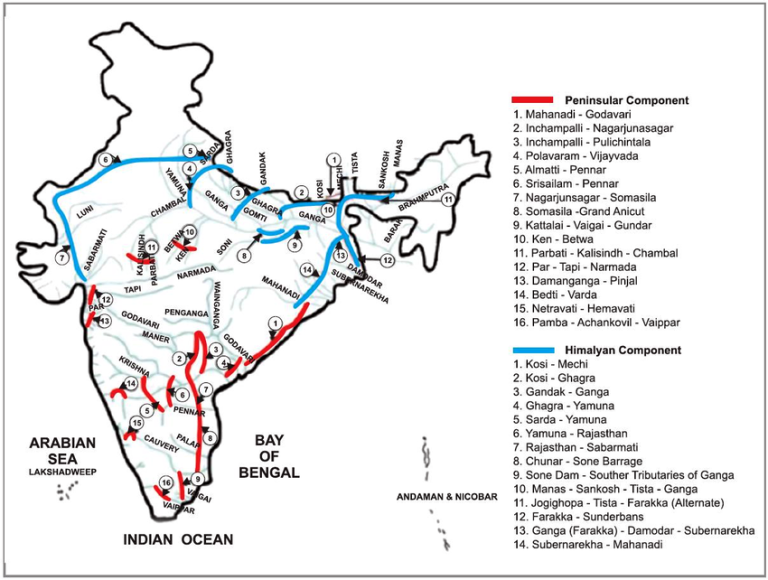Biodiversity & Environment
National Interlinking of Rivers Authority
- 15 Nov 2021
- 4 min read
Why in News
The Centre Government is contemplating creation of the National Interlinking of Rivers Authority (NIRA).
- NIRA is supposed to be an independent autonomous body for planning, investigation, financing and the implementation of the river interlinking projects in the country.
Key Points
- NIRA will function as an umbrella body for all river linking projects and to be headed by a Government of India Secretary-rank officer.
- It will replace the existing National Water Development Agency (NWDA).
- It will coordinate with neighbouring countries and concerned states and departments and will also have powers on issues related to environment, wildlife and forest clearances under river linking projects and their legal aspects.
- NIRA will have the power to raise funds and act as a repository of borrowed funds or money received on deposit or loan given on interest.
- It will also have the power to set up a Special Purpose Vehicle (SPV) for individual link projects.
Inter-Linking of Rivers Programme
- Origin of Idea: The idea was first mooted during the British Raj when Sir Arthur Cotton, a British general and irrigation engineer suggested linking the Ganga and the Cauvery for navigational purposes.
- Aim: The InterLinking of Rivers programme (ILR) programme is aimed at linking different surplus rivers of the country with deficient rivers so that the excess water from surplus regions could be diverted to deficient regions.
- Need for Such Projects:
- Reducing Regional Imbalance: India depends on monsoon rains that are erratic as well as regionally imbalanced. Interlinking of rivers will reduce the amount of surplus rain and river water which flows into the sea.
- Irrigation for Agriculture: Interlinking can provide a solution to the rain-fed irrigation problems of Indian agriculture through the transfer of surplus water to deficit regions.
- Reducing Water Distress: This can help in mitigating the effect of drought and floods to a certain extent.
- Other Benefits: Hydropower generation, Round the year navigation, Employment generation, Ecological benefits as dried up forests and lands will be replenished.
- Associated Challenges:
- Environmental Costs: The project threatens to obstruct the natural ecology of rivers.
- The proposed dams could threaten the forests of the Himalayas and impact the functioning of the monsoon system.
- Climate Change: In interlinking systems, it is assumed that the donor basin has surplus water that can be made available to the recipient basin.
- The whole concept goes for a toss if this basic assumption goes haywire for any system due to climate change.
- Economic Costs: It is estimated that river interlinking will be a huge fiscal burden on the Government.
- Socio-Economic Impact: It is estimated that the network of canals extending to about 15000 km would displace about 5.5 million people, mostly tribals and farmers.
- Environmental Costs: The project threatens to obstruct the natural ecology of rivers.
National Perspective Plan for Interlinking of Rivers
Way Forward
- Interlinking of rivers has its pros and cons, but given the economic, political, and environmental implications, it may not be a wise decision to carry out this project at a centralized national level.
- Instead, interlinking of rivers may be pursued in a decentralized manner, and more sustainable ways like rainwater harvesting should be promoted to mitigate floods and droughts. For example: Ken-Betwa Rivers linking.





